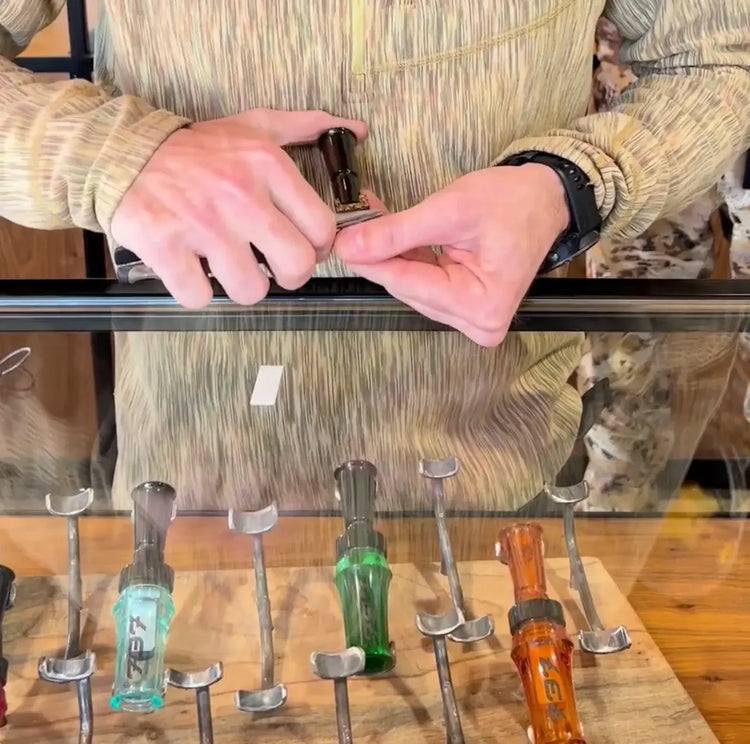If you're a duck hunter, then you know the importance of having a good duck call. A duck call can mean the difference between bagging your limit and going home empty-handed. But what do you do if your duck call starts to sound off? Follow along as we show you how to swap the cork and reed in your duck call to get it sounding like new again!
First, take out the old cork and reed. If you like how your call sounded before, keep the old reed to help you when you cut the new reed. Take your new reed and bend it a little between your thumb and pointer finger. This will help you find the natural bow of the reed.

Place the natural bow against the back of the call so that it bends up.

Make sure the reed is flat in the cork slot and not rounded over. This will make sure it doesn't cut off any air.

While holding the reed in place, take the cork and chew on it a little bit to make it wet. This will help it slide into the cork slot easier. Then slide the cork into the cork slot. You can use something to help push the cork in all the way.

Make sure the reed is perfectly centered in the middle of the tone board. Then cut off the extra cork from the edges of the call.

Now you can start trimming the reed. PRO TIP: If you You can use the length of your old reed as a template to help you make your initial cut on the new reed.

It is better to start with a longer reed and then trim it down as needed. The most important thing is to be patient and make small trims. If you cut off too much, you will have to start over with a new reed.

Once your reed is the length that you want, cut the corner tips of the reed diagonally.

Minor cuts are best. Cut the reed down a little bit at a time. Every time you make a cut, try it out by running your call from top to bottom. If it feels stiff, keep making minor trims until you get the tune you want.
And there you have it, a retuned duck call ready to bring in those ducks this season! Cheers to a good season of bagging birds.

